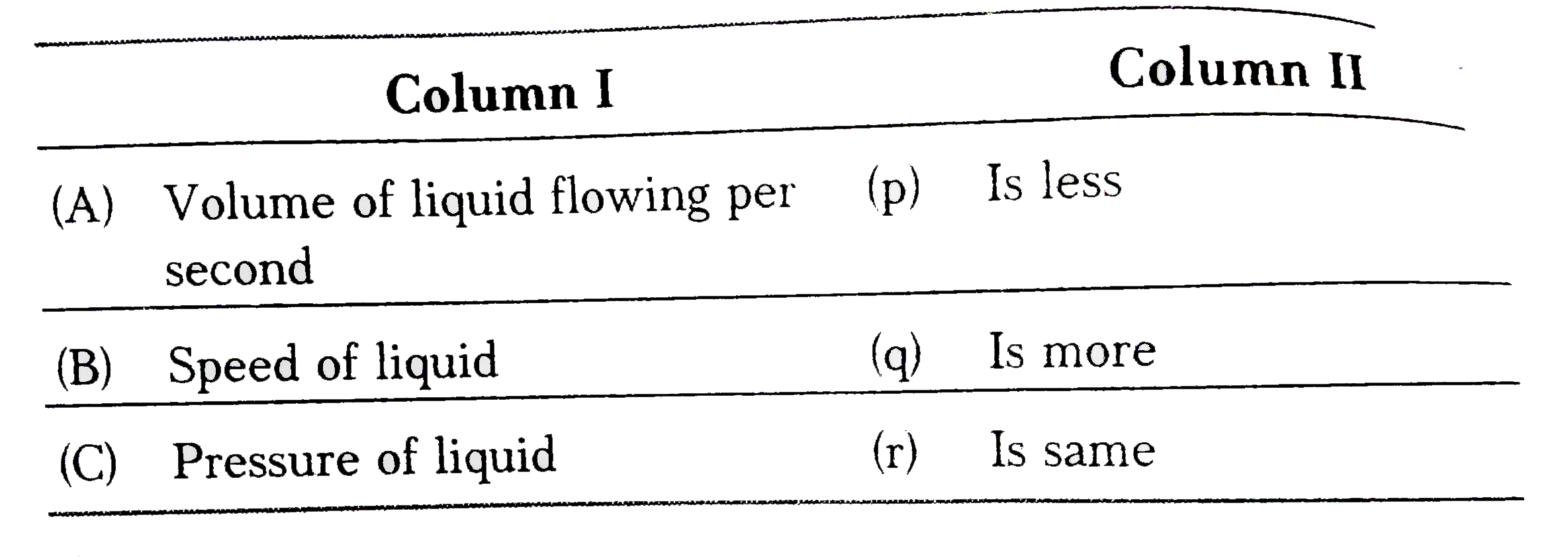A liquid is in a streamline flow through a pipe of non-uniform cross-section such that the sum of its kinetic energy, potential energy and pressure energy per unit volume remains constant. Name the theorem and prove it and write its two applications.
Step-by-Step Solution:
1. Identify the Theorem:
The theorem that describes the behavior of a liquid in a streamline flow through a pipe of non-uniform cross-section is known as Bernoulli's Theorem.
2. Statement of Bernoulli's Theorem:
Bernoulli's Theorem states that for a steady, incompressible flow of a fluid, the sum of the kinetic energy per unit volume, potential energy per unit volume, and pressure energy per unit volume remains constant along a streamline. Mathematically, it can be expressed as:
P+12ρv2+ρgh=constant
where:
- P = pressure energy per unit volume,
- ρ = density of the fluid,
- v = velocity of the fluid,
- g = acceleration due to gravity,
- h = height above a reference level.
3. Proof of Bernoulli's Theorem:
To prove Bernoulli's theorem, consider a small element of fluid flowing through a pipe. By applying the work-energy principle:
- The work done on the fluid element by pressure forces is equal to the change in kinetic energy and potential energy of the fluid element.
- If we consider a fluid element moving from point 1 to point 2 in a streamline flow, we can write:
P1+12ρv21+ρgh1=P2+12ρv22+ρgh2
- Rearranging gives us the statement of Bernoulli's theorem, confirming that the total mechanical energy per unit volume is conserved.
4. Applications of Bernoulli's Theorem:
- Application 1: Venturi Effect: This principle is used in devices like carburetors and atomizers, where a fluid's velocity increases as it passes through a constricted section of a pipe, resulting in a drop in pressure.
- Application 2: Airplane Wings: The shape of airplane wings is designed such that air travels faster over the top surface than the bottom surface, creating lower pressure above the wing and generating lift according to Bernoulli’s principle.
---
The theorem that describes the behavior of a liquid in a streamline flow through a pipe of non-uniform cross-section is known as Bernoulli's Theorem.
Bernoulli's Theorem states that for a steady, incompressible flow of a fluid, the sum of the kinetic energy per unit volume, potential energy per unit volume, and pressure energy per unit volume remains constant along a streamline. Mathematically, it can be expressed as:
P+12ρv2+ρgh=constant
where:
- P = pressure energy per unit volume,
- ρ = density of the fluid,
- v = velocity of the fluid,
- g = acceleration due to gravity,
- h = height above a reference level.
To prove Bernoulli's theorem, consider a small element of fluid flowing through a pipe. By applying the work-energy principle:
- The work done on the fluid element by pressure forces is equal to the change in kinetic energy and potential energy of the fluid element.
- If we consider a fluid element moving from point 1 to point 2 in a streamline flow, we can write:
P1+12ρv21+ρgh1=P2+12ρv22+ρgh2
- Rearranging gives us the statement of Bernoulli's theorem, confirming that the total mechanical energy per unit volume is conserved.
- Application 1: Venturi Effect: This principle is used in devices like carburetors and atomizers, where a fluid's velocity increases as it passes through a constricted section of a pipe, resulting in a drop in pressure.
- Application 2: Airplane Wings: The shape of airplane wings is designed such that air travels faster over the top surface than the bottom surface, creating lower pressure above the wing and generating lift according to Bernoulli’s principle.
Topper's Solved these Questions
- Mechanical Properties of fluidsBOOK - SL ARORACHAPTER - Mechanical Properties of fluidsEXERCISE - Exercise
459 Videos
- Mathematical toolsBOOK - SL ARORACHAPTER - Mathematical toolsEXERCISE - Exercise
20 Videos
- Mechanical Properties of SolidsBOOK - SL ARORACHAPTER - Mechanical Properties of SolidsEXERCISE - Example
113 Videos
Similar Questions
A liquid is flowing through a pipe of non-uniform cross-section. At a point where area of cross-section of the pipe is less, match the following columns.

View SolutionA liquid rs flowing in a horizontal pipe of non-uniform cross section. Which of the following quantities may remain unchanged with respect to time?
View Solution
Knowledge Check
The pressure energy per unit volume of a liquid is
APρBPCP×ρDρPIn streamline flow of liquid through a pipe of uniform cross sectional area, all stremlines are
Adivided into plane layers.Bdivided into reactangular blocks.Cparallel to the axis of the tube.Dcircular in shape.A liquid is under stream lined motion through a horizontal pipe of non uniform cross section. If the volume rate of flow at cross section a is V, the volume rate of flow at cross section a2 is
AV2B2VCV4DV
If P is the pressure of gas, then the kinetic energy per unit volume of the gas is .
View SolutionThe pressure P of an ideal gas and its kinetic energy E per unit volume are related as –
View SolutionAssertion : If a current flows through a wire of non-uniform cross-section, potential difference per unit length of wire is same throughout the length of wire.
Reason : Current through the wire is same at all cross-sections.
View SolutionThe pressure exerted in terms of total kinetic energy per unit volume (E) is
View SolutionA bullet is fired up with velocity less than escape velocity. The sum of its potential energy and kinetic energy is
View Solution
